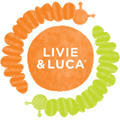Why Flexible Soles Are Best for New Walkers
It is breathtaking to watch your babe’s first steps. After all those months of being carried or crawling, they are finally on two feet and ready to step into the world!
One way to make sure your walking toddler is as safe as possible is to provide just the right kind of healthy footwear for navigating the ground both inside and outside!
There have been many misconceptions over the years about the right footwear for a new walker. Not so long ago, it used to be thought that new walkers needed a very supportive and stiff shoe with both arch and ankle support. However, more recent research has shown that little feet need exactly the opposite – a flexible soft-soled shoe that is basically a protective shell around the foot so that there is nothing to impede the natural motion and growth of the feet and toes.
The new walker’s footwear should be similar to the flexible and protective footwear worn as a baby. As the activity of your toddler increases and he or she starts to run, to climb and be on rougher terrain, you’ll want to transition to a flexible-soled shoe with a sturdier more protective sole. Depending on the activity, a shoe with some type of tread or firm sole is necessary. But don’t give up on the flexibility!
Why, you ask? Let’s take a look at how a baby’s foot grows. The human foot is a complex structure of 26 bones, though a baby’s foot contains more cartilage than bone. Even though the basic structure of the foot is fully developed by age two, the bones do not harden until around age 18.
A child’s arch doesn’t develop until puberty and it’s hard to even see it on the foot for the first two years of life. What you’ll probably notice is a fat pad in place of the arch which makes a baby’s foot look chubby but is actually supporting the whole foot during its growth.
The American Academy of Pediatrics guidelines recommend that toddlers wear lightweight and flexible shoes that allow their feet to move naturally. They offer that the best walking shoes for babies are made of leather or mesh material that enable feet to breathe and have rubber soles for traction.
“A person’s lifelong gait (walking pattern) begins with her first steps. Babies learn to walk by gripping the ground with their toes and using their heels for stability. This helps develop the muscles needed for walking and is easier to do without socks or shoes. Although your baby’s feet will develop just as well without footwear, walking barefoot may not always be possible. Shoes should be worn to protect your baby’s feet when cruising or walking outside, or on uneven, hot, or cold surfaces. Shoes, socks, and footed pajamas should have wiggle room and traction to prevent falling and allow proper foot development.”
The AAP offers the following tips about shopping for shoes for new walkers:
1. Shoes should be lightweight and flexible in the forefoot to allow babies’ feet to flex side to side and up and down for their natural foot movement. They should also provide stability in the mid-foot for control, and cushioning in the heel for stability and balance.
2. Shoes should be made of breathable materials such as leather or quality mesh, as babies’ feet sweat twice as much as adults’.
3. Outsoles should be made of rubber for traction to prevent slipping when babies are learning how to pull up, cruise, walk, and run.”
The AARP also advises that babies will need new shoes every two to three months.
Livie & Luca’s “Joyful Foot Philosophy” falls in line with the American Academy of Pediatrics recommendations:
- Safe and Sustainable Ingredients: For the well being of our planet and your child, our shoes are made from CPSIA-certified lead-free leather.
- Flexible: Go ahead and bend our shoes! They are super flexible and allow for a full range of motion.
- Wiggle Room: Wide toe boxes allow plenty of room for wiggling toes!
- Lightweight: Our shoes are so lightweight your little one will wear them all day.
- Breathable: Our shoes are fully lined with soft leather, which is naturally anti-microbial and breathable. In addition, most uppers are made of genuine leather or suede.
As you can hear, there’s not a lot of debate about the type of sole new walkers should be wearing: soft-soled is best to give those little feet room to flex and to grip the floor with their toes. As soon as they are navigating tougher terrain, their soles should be made of a flexible and light-weight material like rubber.
At Livie & Luca it’s vital to us to create not only the most adorable, fashion-forward shoes on the planet but also shoes that are healthy and good for natural foot development for your little one!
Click to shop our most flexible styles!





I was wondering if you could provide your resources. I am having difficulty finding research that compares the different types of shoes with milestones
Nice article.
It is really heart touching To see the first step of your baby. In this time we need to provide the right footwear that navigating the ground both inside and outside. besides, we can provide toys that toddlers will enjoy sitting in it while learning how to walk.
https://www.kidwalkers.com/disney-winnie-the-pooh-music-and-lights-walker/
Leave a comment